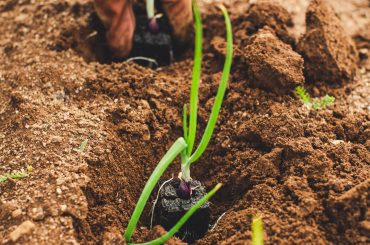Peruvian blueberries, also known as “Peruvian giant blueberries,” have gained a reputation for being larger than other varieties of blueberries. Their size is often discussed among fruit enthusiasts and health-conscious consumers. In this article, we will delve into the reasons behind the impressive size of Peruvian blueberries. From the climate and soil in Peru to the specific cultivars and farming practices used, we will explore the various factors that contribute to the growth of these giant blueberries. Whether you’re a blueberry lover or simply curious about the factors that influence fruit growth, this article will provide valuable insights into the world of Peruvian blueberries.
Contents
Climate and Soil
Peru’s unique climate and soil conditions play a crucial role in the growth and development of its blueberry crops, including the famous Peruvian giant blueberries. The climate in Peru is characterized by a mild, subtropical coastal desert climate, which provides an ideal environment for blueberries to thrive. Additionally, the fertile soil in the region is rich in minerals and nutrients essential for the growth and development of healthy blueberry plants.
Specific weather conditions, such as temperature and rainfall, also significantly impact blueberry growth. For example, blueberries require a specific range of temperatures to grow properly. In Peru, the cooler coastal climate provides ideal temperatures for blueberry plants, which can lead to larger fruit sizes. On the other hand, excessive rainfall can negatively affect the growth and quality of blueberries, making moderate and consistent rainfall in Peru ideal for blueberry production.
Regarding soil, the pH level is a critical factor affecting fruit growth. Blueberry plants thrive in acidic soil with a pH range of 4.5 to 5.5. The soil in Peru’s coastal region is naturally acidic, which benefits blueberry growth. Furthermore, the soil is rich in minerals such as phosphorus, potassium, and calcium, essential for plant growth and development.
Genetics and Cultivars
Genetics also plays a significant role in the size of blueberries. Blueberry cultivars are selected and bred for specific traits like size, sweetness, and firmness. These traits are determined by the plant’s genetic makeup, which influences the plant’s growth and development.
In Peru, several blueberry cultivars are grown, including the Duke, Brigitta, Legacy, and Liberty varieties. Each cultivar has unique characteristics that contribute to the growth and development of blueberries. For example, the Duke variety is known for its large fruit size, making it a popular choice for commercial growers. On the other hand, the Brigitta variety has a slightly sweeter flavor and a firmer texture, making it ideal for fresh consumption and processing.
In addition to genetic differences, blueberry cultivars have varying requirements for optimal growth and development. For instance, some cultivars are more suited to specific soil types or climates, while others are more tolerant of pests and diseases. Therefore, growers must carefully select the cultivars best suited for their specific growing conditions to achieve the desired fruit size and quality.
Furthermore, ongoing research into blueberry genetics and breeding continue to develop new cultivars with improved traits, such as larger fruit size, better disease resistance, and improved flavor profiles. These advancements in blueberry breeding offer exciting possibilities for the future of blueberry production in Peru and beyond.
Farming Practices
Farming practices also play a critical role in the growth and development of blueberries in Peru. Advanced farming techniques are used to optimize the growth and quality of blueberries, which can contribute to their larger size.
One of the most important farming practices in blueberry cultivation is irrigation. In Peru, blueberry farms use drip irrigation systems that deliver water directly to the plant’s roots, providing the plant with the necessary moisture for optimal growth. This technique also helps to prevent water waste, which is crucial in the dry coastal region of Peru.
Another important farming practice in blueberry cultivation is fertilization. Blueberry plants require nutrients such as nitrogen, phosphorus, and potassium for optimal growth and development. In Peru, farmers use organic and synthetic fertilizers to provide blueberry plants with the necessary nutrients.
Furthermore, pruning is a crucial farming practice that helps to promote healthy blueberry growth and development. Pruning involves selectively removing parts of the plant, such as dead or damaged branches, to allow for better light penetration and air circulation. This technique helps to promote fruit growth and can lead to larger fruit sizes.
In addition to these practices, advanced farming techniques such as precision agriculture are also used in Peru. Precision agriculture uses technology like drones and sensors to monitor and optimize crop growth. For example, soil sensors can measure soil moisture and nutrient levels, which can help farmers make informed decisions about fertilization and irrigation.
Why are Peruvian blueberries so big?
In conclusion, the size of Peruvian blueberries is influenced by a combination of factors, including climate and soil conditions, genetics, and farming practices. The coastal region of Peru offers ideal growing conditions for blueberries, with its dry climate and nutrient-rich soil. Specific blueberry cultivars like Duke and Brigitta are selected and bred for their large fruit size, sweetness, and firmness. Advanced farming practices, such as drip irrigation, fertilization, pruning, and precision agriculture, all contribute to the growth and development of blueberries in Peru.
It is essential to understand the factors that contribute to the size of Peruvian blueberries because they play a critical role in the quality and value of the fruit. By optimizing these factors, growers can produce larger, more flavorful blueberries that meet the demands of consumers worldwide.
As a final thought, we must recognize blueberries’ vital role in our diets and overall health. Blueberries are rich in antioxidants, vitamins, and minerals, offering numerous health benefits. We should continue to support blueberry growers in Peru and beyond by choosing to buy and consume this delicious and nutritious fruit.
More Posts :
What Else Can You Grow on a Chia Pet? 2023 Guide to Creative Indoor Gardening
Tomato Bonsai: The Ultimate Guide to Growing Your Own Miniature Tomatoes in 2023





